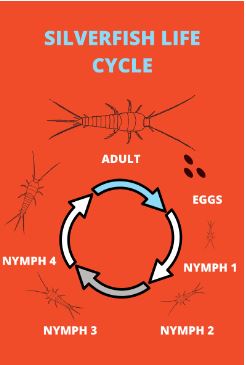Your Cart is Empty
Free Shipping on Orders Over $40
Free Shipping on Orders Over $40
Free Shipping on Orders Over $40
Eliminating silverfish can be done with boric acid tablets or boric acid powder. Spraying along and behind baseboards with a liquid insecticide is also effective. Silverfish move randomly, so traps may not be successful
Silverfish Elimination Products
Silverfish feed on carbohydrates, including starches and sugars. They are attracted to paper and damp clothing. Preventing silverfish being introduced into a house is difficult because they can enter from so many sources. Make sure to remove any old cardboard boxes laying around and vacuum regularly to pick up food crumbs.
_____________________

You may have never heard of silverfish before, but after you see one, it may be hard to forget. Silverfish bugs are the epitome of creepy bugs with their distinctive appearance and alarming movements. While silverfish are not dangerous, you definitely do not want them in your home. If you have questions about silverfish, we have the answers. Learn how to identify, prevent, and control these household pests.

Christian Fischer

Firebrat-- an insect very similar to a silverfish


Silverfish Damage By Micha L. Rieser from Wikimedia Commons